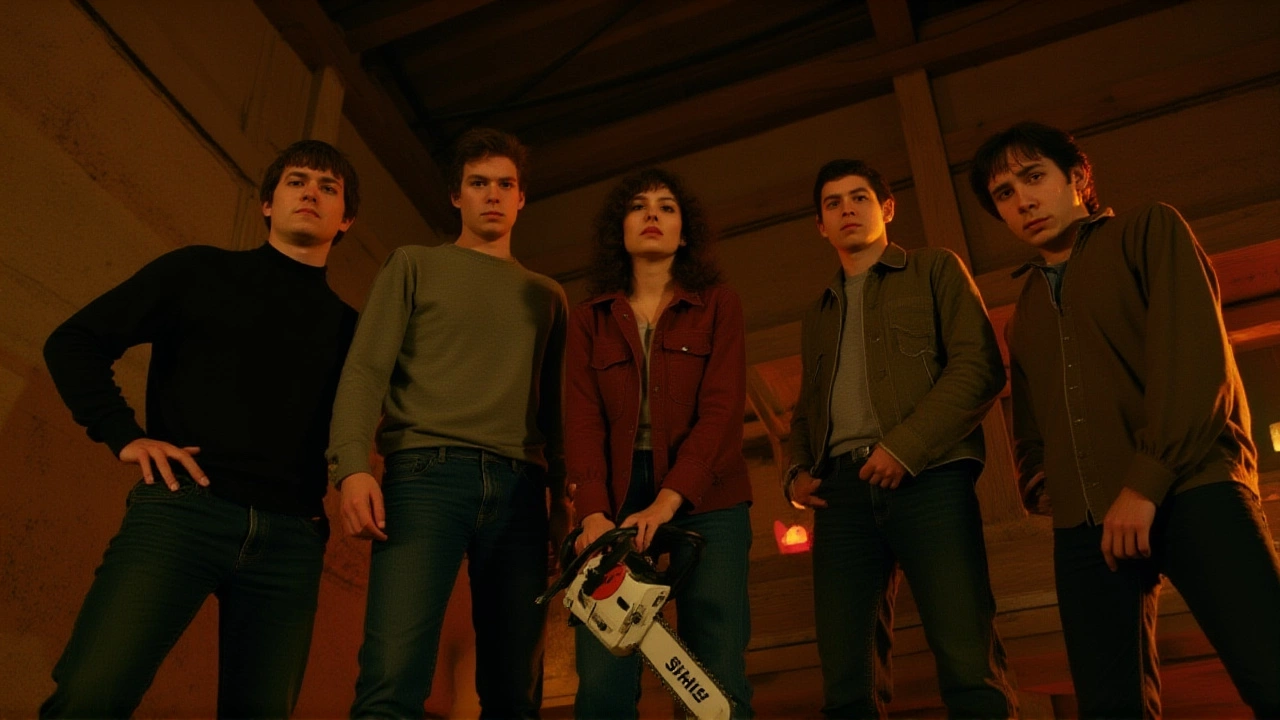
The first five minutes of Stranger Things season 5 don’t tease — they detonate. What viewers saw in the opening sequence wasn’t just another jump scare or eerie hallway crawl. It was a direct, visceral answer to the question that’s haunted the series since episode one: why was Will Byers taken in the first place? The scene, reportedly soaked in the same damp, fungal dread that defined the show’s early seasons, reintroduces a younger version of Will — digitally de-aged to around 11 years old — surrounded by writhing, squelchy tentacles that seem to breathe as they move. The sound design alone tells a story: wet, sticky, almost organic. Like something alive and hungry, dragging itself through the dark.
Why This Scene Matters More Than Just Visuals
The original abduction of Will Byers in season one wasn’t just a plot device — it was the emotional core of the entire series. His disappearance shattered the quiet rhythm of Hawkins, Indiana, and set in motion the collapse of normalcy that the show has spent four seasons unraveling. For years, fans theorized that Will was chosen because of his sensitivity, his connection to the Upside Down, or even because he was somehow already infected. But the show never gave a clear answer — until now. The fact that season five opens with this moment suggests the creators, the Duffer Brothers, are circling back to the origin story not just for nostalgia, but for closure.The use of de-aging technology here is telling. It’s not a flashback. It’s not a dream. It’s a re-experiencing. Will isn’t remembering his abduction — he’s reliving it, possibly through the lens of the Upside Down’s lingering psychic residue. That’s a narrative risk. It could feel gimmicky. But given how the show has consistently used childhood trauma as its emotional engine — from Eleven’s isolation to Mike’s grief, from Nancy’s survivor guilt to Max’s fading memories — this feels earned. The tentacles aren’t just monsters. They’re the physical manifestation of the trauma that never left him.
What the Tentacles Really Are (And Why They’re So Gross)
"Squelchy tentacles" might sound like a joke, but in the world of Stranger Things, they’re terrifyingly precise. These aren’t the sleek, metallic limbs of a robot or the spindly, alien appendages of a sci-fi thriller. They’re fleshy. Moist. They drip. They contract. They make wet, sucking noises — the kind you hear when you pull a soaked sponge out of water. That’s intentional. The Duffer Brothers have always grounded their horror in the visceral, the biological. The Mind Flayer’s tendrils in season two were disturbing because they looked like veins. The Demogorgon in season one was terrifying because it moved like an animal with too many joints. These tentacles? They look like they grew out of the walls of Hawkins National Laboratory — or worse, out of Will’s own body.It’s possible these aren’t external invaders at all. Could they be the Upside Down’s attempt to reabsorb Will? To reconnect him to the dimension that once claimed him? Or are they the physical echo of the psychic bond he formed with Vecna in season four? The show has hinted that the Upside Down isn’t just a place — it’s a living, evolving consciousness. And Will, the first human to ever be pulled through, might be its original host.
Netflix’s Gamble on Nostalgia — And Why It’s Working
Netflix has spent the last five years turning Stranger Things into a global phenomenon, worth an estimated $1.5 billion in brand value alone. But streaming is a graveyard of once-beloved shows that lost their way. Season four leaned hard into horror, introduced a new villain, and stretched the runtime to nearly five hours. It was ambitious. But it also risked alienating fans who missed the small-town, D&D-fueled charm of the early seasons.Season five’s opening suggests Netflix and the Duffer Brothers know exactly what they’re doing. They’re not chasing trends. They’re returning to roots. The de-aged Will isn’t just a visual effect — it’s a narrative reset button. It’s a way to say: "Remember why you fell in love with this show? This is where it started. And this is where it ends."
The incomplete line from The A.V. Club’s report — "We saw some of Will’s..." — feels like a tease, but also a clue. Was it his memories? His screams? The way his fingers curled around the lab floor as the portal closed? The fact that we don’t know yet is part of the magic. The show has always trusted its audience to fill in the gaps. And for fans who’ve waited since 2016 for answers, this opening is a promise: the mystery is being solved. Not with explosions or CGI armies, but with silence, sweat, and the sound of something wet pulling you into the dark.

What Comes Next — And Why It Might Be the End
There’s no official release date yet for season five, but Netflix has confirmed it’s the final season. That changes everything. This isn’t just another chapter. It’s the epilogue. And if the first five minutes are any indication, the Duffer Brothers are preparing to tie every loose thread — from Eleven’s powers to Joyce’s resilience, from Steve’s redemption to Lucas’s leadership — back to that moment in 1983 when a little boy walked into the wrong basement and the world cracked open.Expect more flashbacks. More echoes of season one. More of Will’s voice, quiet and trembling, whispering things we’ve never heard before. The tentacles? They’ll likely evolve. Maybe they’ll merge with Vecna’s vines. Maybe they’ll become the final form of the Upside Down — not a dimension, but a living wound in reality, fed by human fear and grief. And if Will is the key to closing it? Then his journey from victim to savior is complete.
Behind the Scenes: The Tech Behind the De-Aging
While Netflix hasn’t released details, industry insiders suggest the de-aging of Will was achieved using a combination of archival footage from season one and AI-assisted facial mapping. The actor, Noah Schnapp, reportedly spent weeks studying his own performance from 2016 — the way he blinked, how his voice cracked when scared, even how he chewed his lip when nervous. The result? A version of Will that doesn’t look like a digital overlay, but like a ghost from the past stepping back into the present. It’s not just tech. It’s therapy. For the character. For the audience. For the show itself.Frequently Asked Questions
Why is Will de-aged in season five instead of using flashbacks?
De-aging allows the show to integrate Will’s younger self directly into the present timeline of season five, creating a psychological and emotional collision rather than a simple memory. This technique blurs the line between past and present, suggesting the Upside Down is still actively pulling him back — not just as a memory, but as a living, breathing part of its design. It’s more haunting than a flashback ever could be.
Are the squelchy tentacles connected to Vecna or the Mind Flayer?
They’re likely an evolution of both. The Mind Flayer’s tendrils were more like vines; Vecna’s were skeletal and psychic. These tentacles are biological, wet, and alive — suggesting the Upside Down has merged with Vecna’s consciousness to create a new, more organic threat. They may represent the dimension’s final form: not a place, but a living organism that feeds on trauma, using Will as its anchor point.
What does this mean for Eleven’s powers in the final season?
If Will is the original key to the Upside Down, then Eleven’s connection to him — forged in season one — becomes the key to closing it. Her powers may not be enough to destroy the dimension. Instead, she might need to reconnect with Will’s younger self, re-experiencing his fear to sever the psychic bond. This could mean a final, emotional showdown inside the Upside Down, not with fists, but with memory.
Is this the end of the Stranger Things universe?
Yes — for now. The Duffer Brothers have confirmed season five is the final chapter of the core story. But Netflix has already greenlit spin-offs, including one focused on the Hawkins Lab experiments. The Upside Down may be sealed, but its legacy — and the trauma it left behind — will live on in new stories. Will’s journey ends here. But the world he helped save? It’s just beginning to heal.
